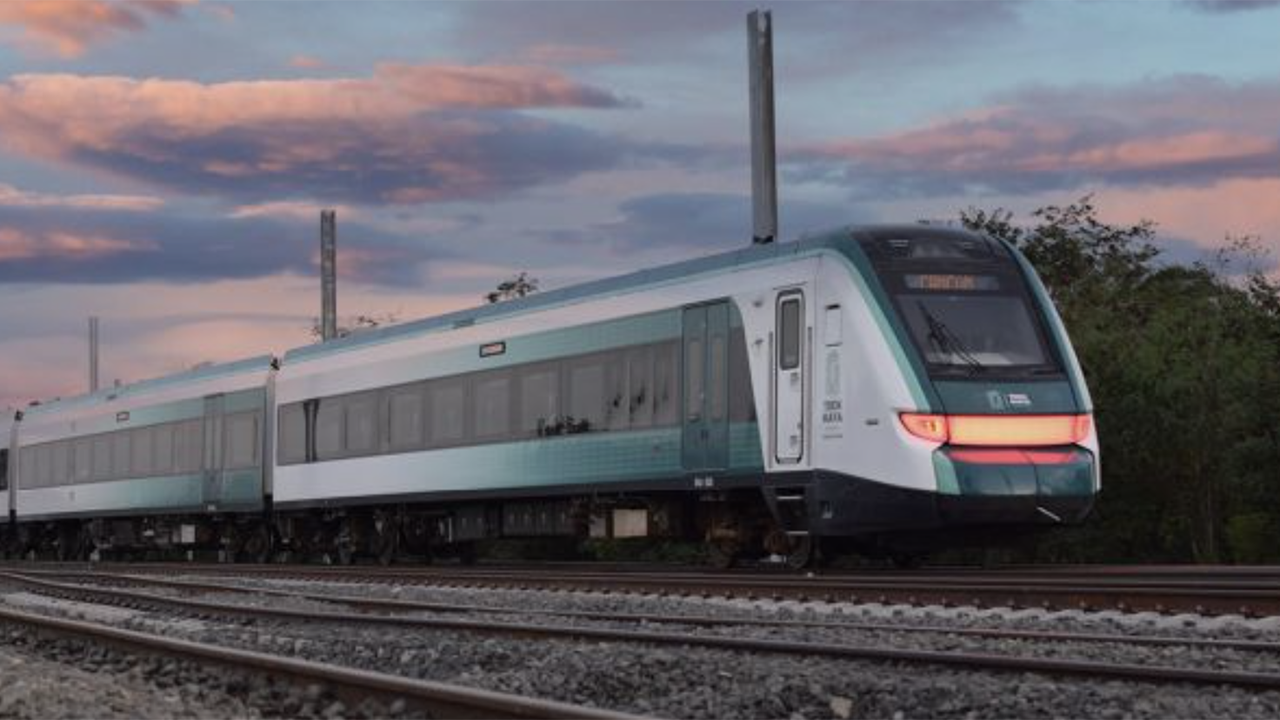
Mayan Train Full Opening Delayed to Late August
Written by Kevin Smith, Editor-in-Chief, International Railway Journal
(Photo Credit: Facebook/Tren Maya)
Construction problems on an environmentally sensitive section of the line between Playa del Carmen and Tulum have caused numerous setbacks.
Mexico’s president, Andrés Manuel López Obrador, has announced that the remainder of the 1525-kilometer (947-mile) Mayan Train railway on the Yucatán peninsula will be inaugurated at the end of August.
López Obrador said ahead of the opening of the third section of the railway in February that the Mayan Train project would open in full by June 2 when the Mexican presidential election is due to be held, instead of at the end of February.
The latest delay is primarily the result of problems with construction on the 67.7-kilometer (42-mile) Section 5 South between Playa del Carmen and Tulum.
Issues have been caused with piling of the elevated sections of the railway through this area. There have also been allegations that environmental damage and water contamination have been caused to limestone caverns—cenotes—and underground rivers, the only source of fresh drinking water on the peninsula. Activists published photographs of the pilings in caves in March, while in February a judge ordered the suspension of work on the section to allow for the presentation of relevant environmental studies, a request that has been ignored.
Around 80 kilometers (49.7 miles) of the railway is elevated on the entire 111.3-kilometer (69.2-mile) Section 5 due to the unstable ground conditions and López Obrador confirmed reports during a news conference on April 22 that clean-up is underway following an issue with a piling in a cave on the stretch between Akumal and Tulum. He added that a 200-meter (218.7-yard) cabled-stayed bridge will be constructed on this section to avoid additional piling and to prevent further damage.
“We are not going to install piles here,” López Obrador says. “It is going to be a cable-stayed bridge and this means a delay for us.”
López Obrador confirmed that he will continue to closely monitor work and will visit the construction sites every 15 days, stating that “by September, everything will be finished” including all stations, depots and workshops.
López Obrador will leave office at the end of September.
As well as Section 5 South, work is continuing on the 255-kilometer (158.5-mile) Section 6 from Tulum to Bacalar; and the 254-kilometer (157.8-mile) Section 7 from Bacalar to Escárcega, Campeche.
López Obrador inaugurated the initial 473-kilometer (293.9-mile) section of the project between San Francisco de Campeche to Cancún Airport on Dec. 15. This was extended by 419 kilometers (260.4 miles) south to Escárcega and Palenque on Dec. 31 for a total of 892 kilometers (554.3 miles). Another 45.6 kilometers (28.3 miles) between Cancún Airport and Playa del Carmen—Section 5 North—opened Feb. 29. Trains are serving 24 stations.
Operational Problems
Infrastructure work is continuing on the sections where services are operational, including at stations. However, the railway is consistently running into problems. According to the Secretariat of National Defense (Sedena), there has been an operational issue with the Mayan Train network “once every three days” since the initial section of the line opened in December, according to data retrieved through a request on the National Transparency Portal by Latinus.
The most high-profile was a derailment of the fourth car of a four-car train operating a Campeche – Cancún service on March 25.
The derailment occurred around 50 meters (54.7 yards) from Tixkobob station. Turnouts on the section are currently being manually operated with full installation of the automatic train control system supplied by Alstom not yet complete, Mexico’s Defense Secretary, General Luis Cresenico Sandoval, told a news conference on April 2. The train derailed while entering the station at around 10 kph (6.2 mph). Cresenico Sandoval confirmed that point locks used in the automated system were not secured in the correct position after the previous train had passed through the turnout, causing the derailment.
Other common issues reported include train delays, lack of air-conditioning, intermittent internet availability, and problems purchasing tickets.
Reports in the local press suggest that there is a lack of experience and technical expertise among railway personnel, while other reports highlight issues caused by a shortage of rolling stock for the line.
Alstom is supplying 42 X’Trapolis multiple-units comprising 32 bi-mode trains and 10 DMUs for the project, but reports state that only six trains have been delivered so far, short of the 25 that were expected to be delivered by April.
Railway Age sister publication IRJ is awaiting comment from Alstom on the status of the deliveries and the extent of railway systems installation on the Mayan Train project. The supplier is equipping the railway with ETCS Level 1 as well as train protection, telecommunications and radio systems under a contract awarded in May 2021.
According to La Silla Rota, the trains are able to provide 84% of network capacity but are being pushed to their limits. These trains are also being used to test new sections of track.



